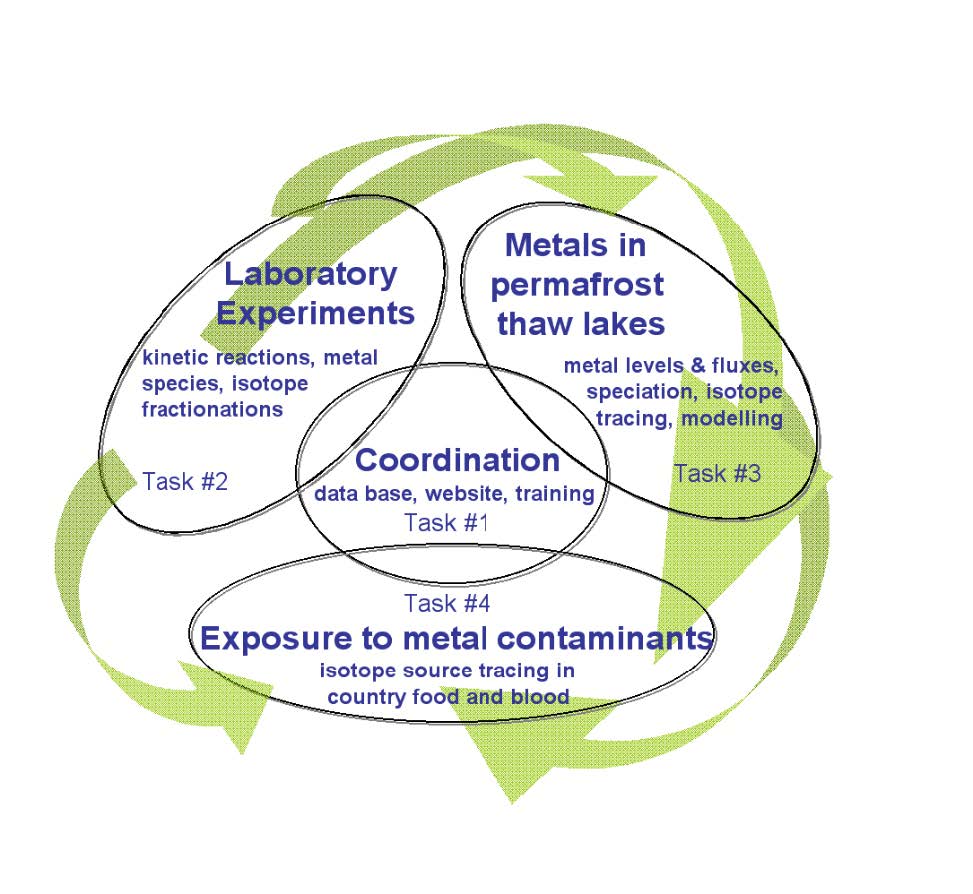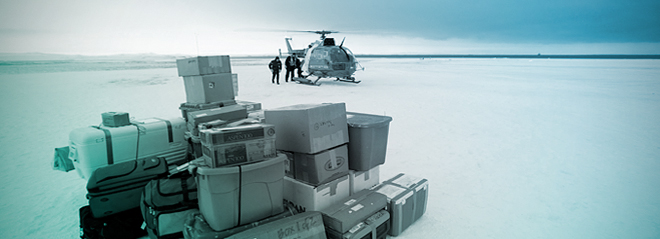|
|

|
|

|
|

|
|
What is Arctic Metals?
Our knowledge of the behavior of metals in the environment is critical for a number of social issues, namely economic, regulations, health of living organisms and humans, traditional way of life. The Arctic Metals project, financed by the French National Research Agency (ANR) aims at developing tools (speciation, isotopes) to assess metals sources, mobility and
reactivity in "remote" areas of the Arctic and sub-arctic AND to determine their bio-availability for
northern biota and populations. The anthropogenic pressure, through mining exploration and exploitation
in the Arctic and sub-arctic is high and will increase over the next decades. Thus, Arctic and sub-arctic
living biota and population are exposed to several metallic pollutants. The estimation of "toxicity" passes
through our knowledge of levels, chemical forms, reactivity and bio-availability of metals in the
environment. The Arctic Metals project will focus on metal accumulation due to diffuse pollution, which
covers millions of km2 and is more difficult to appreciate than pollution from a punctual source (e.g.
smelters). In a changing environment, re-mobilization of metals of both anthropogenic and natural origin
may yield toxic exposure for biota and human populations.
To achieve our objectives, we defined 4 major
tasks:
1- the project coordination will comprise a Steering Committee and will be dedicated to the
organization of project and international meetings, project logistics (including field missions), progress
reports, setting up training, data base and diffusion of information;
2- laboratory experiments will
document conditions that govern reactions between metals and various organic matters, including
chemical form transformations and isotopic fractionations;
3- metals biogeochemical cycle within various
compartments of selected lake ecosystems in northern Canada and Siberia (Russia) will be assessed
through chemical, speciation, isotopic data;
4- the metal exposure of northern populations will be
addressed through the analyses of the isotopic composition (Hg, Se) of country food and human blood from a "sample bank" covering populations living in arctic and sub-arctic areas in Canada.

Ambitious
results are expected:
i- evaluating the source of metals present in aquatic ecosystems of northern areas;
ii- understanding
the impact of metals on eco-geo-systems in relation to biodiversity by developing tools that
will highlight reactions between metals and organic matter;
iii- tracing the source of metals in human
populations by testing the potential of isotope tracing for Hg and Se in blood samples;
iv- developing a
chemical and isotopic data base and chemodynamic models for various metals in arctic and sub-arctic
aquatic environments.
The project also aims at training several postdoctoral, master and PhD students to state of the art methods applied to environmental studies.





